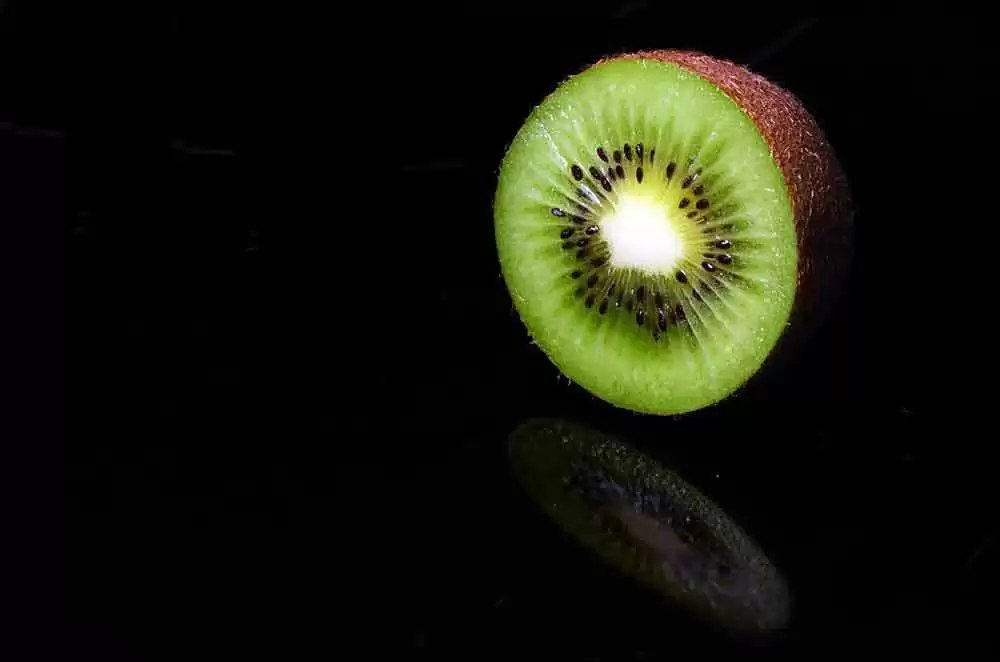
Celiac.com 01/19/2023 - Is gluten sensitivity celiac disease? You might not believe that gluten sensitivity could be celiac disease if you still believe the world is flat. By definition, celiac disease is still clinically diagnosed in the presence of villous atrophy, whereby the absorptive villi, tiny-fingerlike projections of the intestinal surface lining, are blunted to varying degrees by the actions of lymphocytes (a type of white blood cell) responding to gluten(1) . In 1992, Marsh introduced the gluten sensitive spectrum to give wider recognition of the types of intestinal lesions seen in gluten sensitivity, in addition to the classic celiac lesion(2) . In the Marsh I lesions, lymphocytes are found in increased numbers in the villi. Marsh II lesions are comparable to Marsh I lesions with the addition of increased cellular growth in the crypts (the bottom of the valleys in the intestinal lining where new cells are produced). In the classic celiac lesion, villous atrophy is present and is graded as partial, subtotal, and total flattening of the villi (Marsh IIIa, IIIb, and IIIc lesions, respectively)(3). Normal villi architecture with no increased lymphocytic infiltration is sometimes referred to as Marsh 04 . Researchers studying milder Marsh lesions are providing corroboration to the gluten sensitivity of such patients and describing them as having borderline, silent, and subclinical celiac disease. Some gluten-sensitive patients with normal villi architecture are being described as having either latent or potential celiac disease.
Borderline Celiac Disease
Patients with borderline celiac disease have clinical symptoms of celiac disease with demonstrated intestinal abnormality but no villous atrophy(5) . To determine which patients have borderline celiac disease, a trial of a gluten-free diet can demonstrate if such patients respond favorably in symptomatic terms with biopsy improvement. Another approach is the use of a gluten challenge to aid in the diagnosis of patients with initially only mild intestinal damage. In a study by Wahab et al, 38 patients, who had Marsh I lesions along with signs and symptoms of malabsorption, were subjected to a gluten challenge for two months(4) . Five of the 38 patients worsened to Marsh II and seven worsened to Marsh III with villous atrophy. Of the 12 patients whose intestinal lesions had worsened, all had improved symptomatically and histologically (Marsh 0 in seven patients) after six to12 months on a gluten-free diet. In another study, 23 of 35 patients with gastrointestinal symptoms of unknown origin agreed to an eight to 12 month trial of a gluten-free diet(5) . Of seven who were initially found to have Marsh I lesions, six normalized (Marsh 0) and one still had a Marsh I lesion. Of 16 patients who initially had Marsh II lesions, seven normalized, six improved to Marsh I, and three still had Marsh II lesions. All of the patients on a gluten-free diet experienced substantial or complete resolution of clinical symptoms (i.e., diarrhea, weight loss, fatigue, slow gastric emptying, epilepsy, and abdominal pain). Conversely, seven of 12 patients (five lost to follow-up) who refused a gluten-free diet had persistent lesions and symptoms while one progressed from Marsh I to Marsh IIIa lesion and experienced a worsening of symptoms. The response to gluten was clear. Patients with gluten sensitivity who were given a gluten-free diet found relief in their symptoms and improvement or normalization in their biopsies, while those who were gluten challenged had to endure a further provocation of their symptoms and lesions.
Silent and Subclinical Celiac Disease
Celiac.com Sponsor (A12):
With the acceptance of the broader spectrum of celiac disease, some researchers are making the case for the diagnosis of celiac disease in the presence of mild intestinal lesions. In a recent study of 115 silent and subclinical celiac patients, 13% of each form were identified with the presence of mild intestinal damage (Marsh I or II lesions) due to gluten sensitivity(6) . Patients with subclinical celiac disease had extra-intestinal symptoms (i.e., iron deficiency anemia, dental enamel defects, epilepsy, and hair loss) but no gastrointestinal symptoms. Subclinical celiac patients without villous atrophy were detected by antibody testing only 33% of the time. Patients were classified as having silent celiac disease because they had no symptoms and were high-risk for celiac disease due to their status as first degree relatives of celiac patients or as having type I diabetes. Silent celiac patients without villous atrophy were not detected by antibody testing. In practice, the recognition of the silent and subclinical forms of celiac disease will be more accurately diagnosed through the alertness of gastroenterologists and other specialists.
Gluten Sensitivity in Patients with Normal Intestinal Villi
The expression of gluten-sensitive symptoms is exhibited in patients even with normal intestinal villi. Identifying patients with gluten sensitivity involves exclusion of all other possible causes and utilizing various ways of detection. Also, a finding of increased lymphocytes just as villous atrophy is not always a prerequisite for gluten sensitivity. In a study by Picarelli et al, ten patients with celiac-like symptoms and normal villi architecture at some stage during their illness were found to have positivity to anti-endomysial antibodies which disappeared on a gluten-free diet(7) . Only four of the ten patients had an increased lymphocyte infiltrative (Marsh I) lesion in addition to normal villi architecture. Also, six of these patients did not have the common HLA genes associated with celiac disease. Cells cultured from biopsies were challenged with gliadin peptides resulting in immune activation. Challenge with similar corn peptides did not have evidence of immune activation. Also, the patients themselves showed signs of immune activation on a normal diet which went away after the removal of gluten and came back in three patients on a four month gluten challenge. Similarly, latent celiac disease was found in another study of seven children with normal biopsies who were positive for anti-endomysial antibodies and were later found to develop villous atrophy by three years(8) . These studies highlight a need for better diagnosis of non-atrophic celiac disease patients.
Antibody Detection of Mild Intestinal Damage
Although blood antibody testing is useful in predicting the degree of villous atrophy, it can often fail to detect patients with milder intestinal lesions as well as partial villous atrophy (Marsh I-IIIa). A study confirmed that the largest percentage of patients with positive antibody results were found with the most severe intestinal damage(6) . 78% of patients with total villous atrophy were positive for anti-gliadin antibodies while 89% of patients with total villous atrophy were positive for anti-endomysium antibodies. None of the patients with Marsh I lesions or silent celiac disease patients with Marsh II lesions were positive for anti-gliadin or anti-endomysial antibodies. A study of 119 adult celiac patients found a poor correlation between slight intestinal damage and antitissue transglutaminase (anti-tTG) positivity(9) . Only one of 13 patients with Marsh I lesions and eight of 24 patients with Marsh II lesions were anti-tTG positive. Even in the presence of villous atrophy, only 56% of those patients with partial villous atrophy (Marsh IIIa) while 96% of those with total villous atrophy (Marsh IIIc) were positive for anti-tTG. As a method of detecting patients with the potential to develop villous atrophy ('potential' celiac disease), celiac disease patient biopsies were challenged in culture with gliadin peptides while the patients were on a gluten-free diet(8) . Such biopsies were found to produce anti-endomysial antibodies. Therefore, biopsy culture production of anti-endomysial antibodies may be more sensitive than blood anti-endomysial antibodies which fail to detect less severe intestinal damage.
Current research reviewed here demonstrates that patients with non-classical forms of celiac disease can go on to develop the classic diagnostic celiac lesion when they continue on a gluten-containing diet. Conversely, patients with these non-classical forms of celiac disease can heal when given the treatment of a gluten-free diet. Thus, these studies highlight the need for doctors and pathologists to be alert to celiac disease in all its forms in order to recognize it. “(J)ust as Christopher Columbus sailed past an apparently flat horizon to help prove the world is round, the time has come to broaden the horizons of the histologic diagnosis of celiac disease”(10).
References:
- Kennedy NP. 2000. Clinical features of coeliac disease today. Biomed & Pharmacother 54:373-80.
- Marsh MN, 1992. Gluten, major histocompatibility complex, and the small intestine: a molecular and immunobiologic approach to the spectrum of gluten sensitivity ('celiac sprue'). Gastroenterol 102:330-54.
- Rostami K, et al. 1997. SAT and serology in adult coeliacs, seronegative coeliac disease seems a reality. Neth J Med 53:15-19.
- Wahab P, et al. 2001. Gluten challenge in borderline gluten-sensitive enteropathy. Am JGastroenterol 96:1464 - 69.
- Tursi A, and Brandimarte G. 2003. The symptomatic and histologic response to a gluten-free diet in patients with borderline enteropathy. J Clin Gastroenterol 36:13-17.
- Tursi A, et al 2001. Low prevalence of antigliadin and anti-endomysium antibodies in subclinical/silent celiac disease. Am J Gastroenterol 96:1507-10.
- Picarelli A, et al 1996. Gluten-sensitive disease with mild enteropathy. Gastroenterol 111:608-16.
- Holmes G, 2001. Potential and latent coeliac disease. Eur J Gastroenterol Hepatol 13:1057-60.
- Tursi A, et al. 2003. Prevalence of antitissue tranglutaminase antibodies in different degrees of intestinal damage in celiac disease. J Clin Gastroenterol 36:219-21.
- Moskaluk C, 2001. The histologic diagnosis of celiac disease in "nonflat" intestinal mucosa. Am J Clin Pathol 116:7-9.


.webp.d58fea91472641c4d2c47a1d94a16be8.webp)








Recommended Comments
There are no comments to display.
Create an account or sign in to comment
You need to be a member in order to leave a comment
Create an account
Sign up for a new account in our community. It's easy!
Register a new accountSign in
Already have an account? Sign in here.
Sign In Now